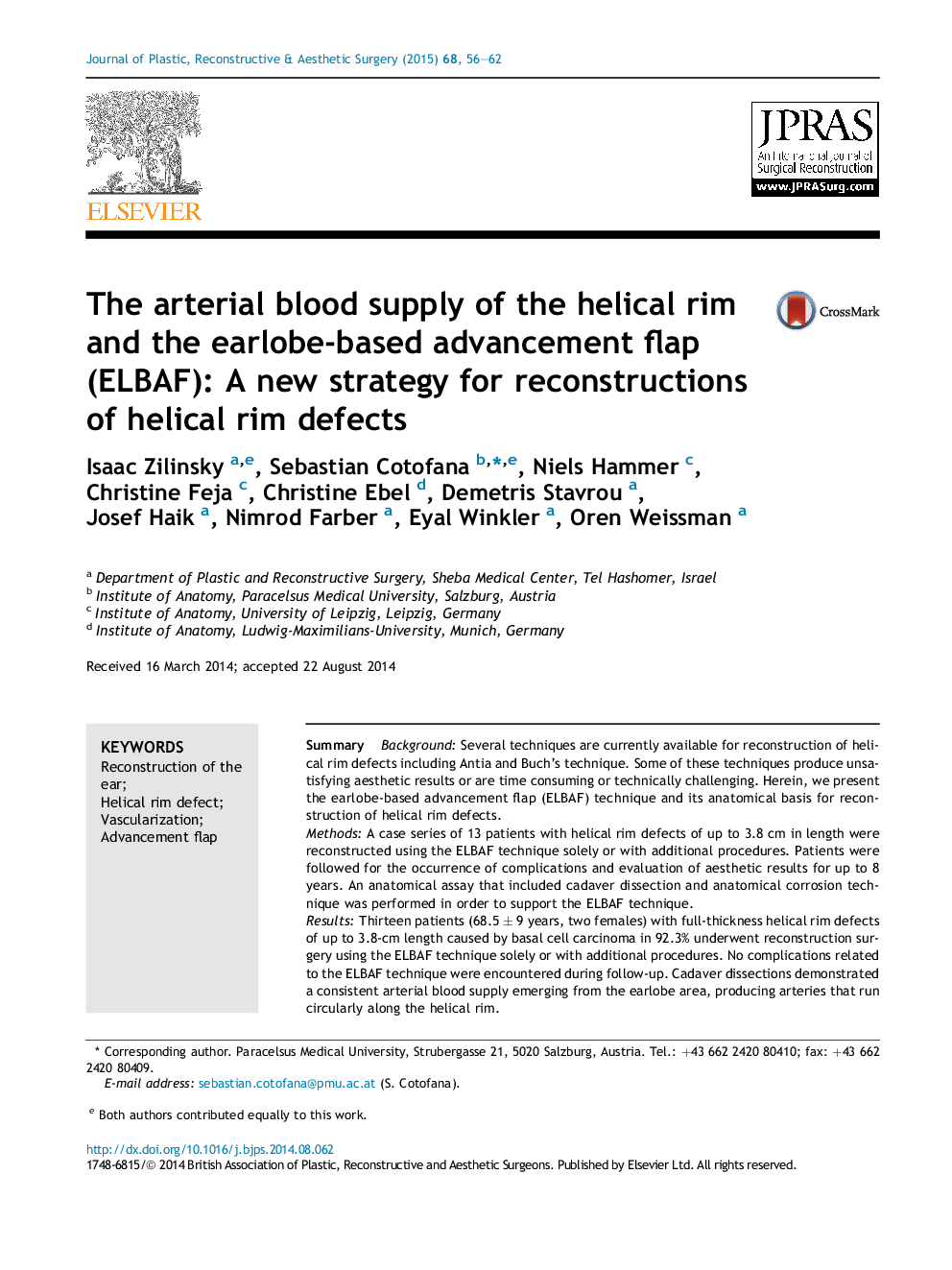| Article ID | Journal | Published Year | Pages | File Type |
|---|---|---|---|---|
| 4118329 | Journal of Plastic, Reconstructive & Aesthetic Surgery | 2015 | 7 Pages |
SummaryBackgroundSeveral techniques are currently available for reconstruction of helical rim defects including Antia and Buch's technique. Some of these techniques produce unsatisfying aesthetic results or are time consuming or technically challenging. Herein, we present the earlobe-based advancement flap (ELBAF) technique and its anatomical basis for reconstruction of helical rim defects.MethodsA case series of 13 patients with helical rim defects of up to 3.8 cm in length were reconstructed using the ELBAF technique solely or with additional procedures. Patients were followed for the occurrence of complications and evaluation of aesthetic results for up to 8 years. An anatomical assay that included cadaver dissection and anatomical corrosion technique was performed in order to support the ELBAF technique.ResultsThirteen patients (68.5 ± 9 years, two females) with full-thickness helical rim defects of up to 3.8-cm length caused by basal cell carcinoma in 92.3% underwent reconstruction surgery using the ELBAF technique solely or with additional procedures. No complications related to the ELBAF technique were encountered during follow-up. Cadaver dissections demonstrated a consistent arterial blood supply emerging from the earlobe area, producing arteries that run circularly along the helical rim.ConclusionsBased on the axial vessel pattern, the ELBAF technique seems to be a useful strategy to reconstruct full-thickness helical defects of up to 3.8 cm in length. This procedure can be regarded as a valid addition to the ear reconstruction repertoire, which can be used alone or in combination with other established techniques.Level of evidence: Level 4, case series.
